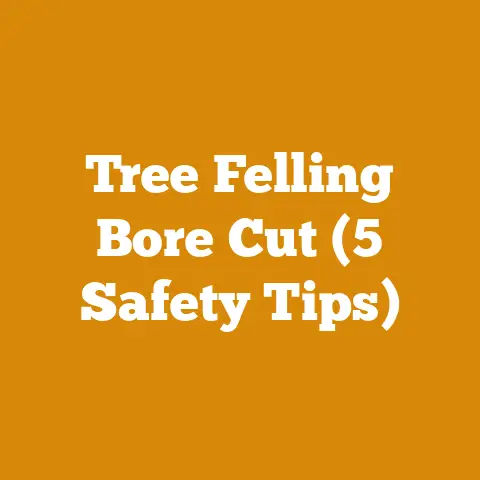Are Cottonwood Trees Dangerous (5 Things to Know)
Are Cottonwood Trees Dangerous? (5 Things to Know)
Let’s talk about cottonwood trees. They look majestic, don’t they? But there’s more to these towering giants than meets the eye. If you’ve ever wondered whether they pose any danger, you’re in the right place. Let’s dive into five things you should know about these fascinating yet potentially troublesome trees.
1. Size and Proximity: A Potential Hazard
You ever look up at a cottonwood tree and think, “Wow, that’s enormous!” Well, you’re not wrong. Cottonwoods can grow over 100 feet tall, and while that’s impressive, it can also be a bit worrisome if they’re near your house or other structures.
Why Size Matters
When a tree that big falls, it can cause a lot of damage. Picture this: a massive branch breaking off during a storm and landing on your roof. That’s not something you want to deal with. The weight and size of these branches are enough to crush vehicles, destroy parts of your home, or even cause injury.
Real-Life Example
Imagine this: my neighbor had a cottonwood tree towering in his front yard. During a monstrous storm last summer, a significant branch broke off and smashed into his garage roof. It was terrifying! Not only did it cause substantial structural damage, but it also rendered his car unusable for weeks while repairs were underway.
Proximity Concerns
If these trees are planted too close to homes or power lines, they can become ticking time bombs. Their sprawling branches can interfere with electrical lines, leading to dangerous situations or power outages during storms.
Storytelling Insight
I remember walking down a street lined with cottonwoods during a windy day. The swaying branches were so close to the power lines that it made me nervous just looking at them. Sure enough, later that evening, the power went out in that neighborhood because a branch had snapped and taken down a line.
Preventive Measures
- Regular Inspections: Make it a habit to check on your cottonwoods, especially if they’re close to structures.
- Strategic Planting: If you’re thinking of planting new trees, ensure they’re far enough from buildings and power lines.
- Professional Pruning: Consider hiring an arborist to manage large branches that could pose a risk.
2. Weak Wood: A Hidden Danger
Cottonwoods have relatively weak wood compared to other trees. This means they’re more likely to lose branches unexpectedly.
Understanding Weakness
Have you noticed how some branches look a bit sketchy? That’s because cottonwood wood tends to be brittle. Even a strong gust of wind can cause branches to snap off.
Insightful Observation
During one of my weekend strolls through the park, I noticed a cottonwood with several broken branches hanging precariously. It wasn’t even stormy—just a breezy day. The park ranger later told me it’s a common issue with cottonwoods due to their weaker wood structure.
Safety Tip
If you’ve got cottonwoods around your property, regularly check for any dead or weak branches. It’s much easier to trim them before they become a problem.
Personal Experience
Once, I decided to skip my routine pruning session because I thought everything looked fine. Big mistake! A sudden gusty afternoon led to two large branches crashing down into my garden, crushing my beloved rose bushes. Lesson learned—regular maintenance is non-negotiable.
Maintenance Practices
- Routine Pruning: Trim away dead or risky branches before they cause harm.
- Professional Assessment: Have an expert assess the tree’s health annually.
- Stay Vigilant: Keep an eye out for any signs of decay or brittleness in the wood.
3. Root Systems: Disruption Below Ground
Ever tripped over a root in your yard? Cottonwood roots are notorious for spreading far and wide. They can wreak havoc on sidewalks, driveways, and even your home’s foundation.
Root Problems Explained
These roots can lift concrete and disrupt plumbing systems. I remember walking on a sidewalk that was all uneven because of cottonwood roots. It felt like navigating an obstacle course!
Detailed Account
A friend of mine had her entire driveway cracked because of invasive cottonwood roots. It started as small cracks but gradually worsened into larger fractures that required costly repairs—a nightmare for any homeowner.
What You Can Do
If you’re planting cottonwoods, keep them far from structures and utilities. If they’re already there, consider installing barriers to redirect the roots.
Root Management Strategies
- Root Barriers: Install these during planting to prevent roots from spreading too far.
- Distance Planting: Keep new trees at least 50 feet away from structures.
- Regular Monitoring: Check for signs of root invasion and address them promptly.
Community Impact
In some neighborhoods, cottonwood roots have caused significant issues with public infrastructure, leading local councils to reconsider their planting policies. It’s not just about personal property; these trees can impact entire communities.
4. Allergies: The Fluff Factor
Those fluffy seeds that cottonwoods release? They’re not just a nuisance; they can trigger allergies too.
Allergy Alert
If you’re someone who suffers from allergies, those floating fluff balls can be aggravating. They fill the air in late spring and early summer, making it hard for some folks to breathe easy.
Personal Insight
As someone who’s battled allergies all my life, I’ve learned to close windows during cottonwood season and keep an air purifier running indoors.
Managing Allergies
- Stay Indoors: Keep windows closed during peak seed release times.
- Use Air Purifiers: Invest in good air purifiers for your home.
- Consult Physicians: Seek medical advice if symptoms get severe.
I recall sitting in my backyard one spring afternoon when the air suddenly filled with cottonwood fluff. Within minutes, my eyes were watering and my throat felt scratchy. It’s incredible how something so seemingly harmless can wreak such havoc on our immune systems!
Community Considerations
In areas where cottonwoods are prevalent, allergy sufferers might find certain times of year particularly challenging. Community awareness campaigns can help educate residents on managing symptoms effectively.
5. Maintenance Needs: Keeping Them in Check
Cottonwoods require regular maintenance to prevent potential hazards. They’re beautiful trees but need some TLC.
Maintenance Musts
- Pruning: Regularly trim dead or weak branches.
- Inspections: Have an arborist check for disease or damage.
- Root Management: Monitor and redirect roots as needed.
Story Time
I once skipped pruning my backyard cottonwood, thinking it looked fine. A surprise thunderstorm hit, and I ended up with a broken fence from a fallen branch—a costly mistake I won’t make again!
Insights on Regular Care
Maintaining cottonwoods doesn’t just protect property; it enhances their longevity and health, ensuring they remain an asset rather than a liability in your landscape.
Equipment Checklist
- Pruning saw
- Safety goggles
- Gloves
- Ladder
- Root barriers (if dealing with root issues)
Community Involvement
Many communities organize tree care workshops, educating residents on proper maintenance techniques for large trees like cottonwoods. Participating can equip you with valuable skills for managing these giants safely.
Additional Considerations: Environmental Impact
Beyond individual concerns, consider the broader environmental impact of cottonwoods in your area.
Ecological Benefits
Cottonwoods play an essential role in local ecosystems:
- Provide habitat for wildlife
- Aid in soil stabilization
- Contribute to air quality improvement
Balancing Benefits and Risks
While they offer ecological advantages, the risks associated with their size and root systems necessitate careful management to avoid negative impacts on human environments.
Sustainability Practices
Engage in sustainable practices by:
- Planting native species alongside cottonwoods
- Encouraging biodiversity
- Supporting local conservation efforts
Safety Precautions
- Always wear protective gear when inspecting or working on trees.
- Use proper equipment for pruning and trimming.
- Know your limits; hire a professional for large or high branches.
Critical Safety Reminders
Never underestimate the potential risks associated with large trees like cottonwoods. Prioritize safety above all else when conducting maintenance activities around these towering giants.
Common Questions
Q: Are cottonwood trees fast-growing?
A: Yes, they grow rapidly, which is why regular maintenance is key.
Q: Can I plant cottonwoods in my backyard?
A: Sure, but consider their size and root spread before planting close to structures.
Q: How do I know if my cottonwood is healthy?
A: Look for vibrant leaves, strong branches, and minimal deadwood. An arborist can provide a thorough assessment.
Addressing Additional Queries
Q: How do I stop cottonwood fluff from entering my home?
A: Seal windows and doors properly; consider using window screens designed to block pollen and fluff particles.
Q: What should I do if a branch falls on power lines?
A: Immediately contact your local utility company; never attempt to remove branches yourself due to electrocution risk.
Conclusion
Cottonwood trees are stunning but come with their own set of challenges. By keeping these factors in mind and taking proactive steps, you can enjoy their beauty while minimizing risks. Got any cottonwood stories or questions? Feel free to share!






